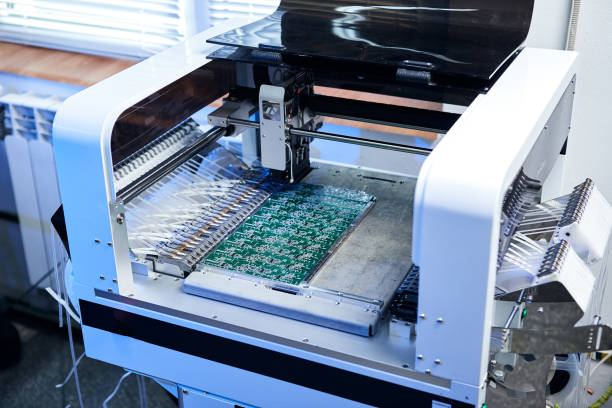Exactly how to Choose the Right SMT Pick-and-Place Device for Your PCB Production Line?

When it comes to putting together published motherboard (PCB) effectively, the pick-and-place machine is the heart of your surface place technology (SMT) line. These makers automate the placement of Surface Mount Devices (SMD) with speed and precision, dramatically improving efficiency and quality in contemporary electronic devices manufacturing. But with a wide variety of choices in the market from portable models for prototyping to rapid makers for automation picking the appropriate SMT pick-and-place maker can be daunting. Comprehend Your PCB Production Volume and Complication The first step in picking the ideal smt pick and place machine is examining your production volume and the intricacy of your PCB layouts. Assuming that Automatic Pick-and-place Machine running tiny sets or prototypes, a guidebook or semi-automatic SMD pick-and-place machine may be sufficient. With regard to mid to high-volume production, an automated pick-and-place maker is important to fulfill throughput and consistency demands. In addition, consider the range of Surface Mount Devices (SMD) you make use of. Facility boards with fine-pitch components, BGAs, or mini parts call for a maker with high accuracy, advanced vision systems, and great placement capability. Assess Speed vs. Reliability Trade-Offs Certainly not all pick-and-place makers are developed equivalent. Some are created for blazing-fast speeds with moderate accuracy, even though others prioritize ultra-fine placement for minimized components. The positioning rate (gauged in parts per hour, or CPH) can range from a couple of thousand to over 100,000 CPH relying on the equipment's ability. If your PCB assembly line prioritizes high throughput over limited tolerances, you might lean toward a high-speed model. Nonetheless, for products like clinical gadgets or aerospace electronics, where accuracy is paramount, choose an smt pick and place machine that emphasizes precision, even at the cost of rate. Check Feeder Capability and Adaptability Farmer capability describes the amount of different elements the machine can deal with in a solitary run. For settings up with a big costs of products (BOM), your device needs to accommodate a higher number of feeders. Additionally, try to find versatility in feeder kinds some devices can take care of tape, tube, tray, and even bulk feeders, which expands your component handling capabilities. Advanced models even enable feeder replenishment without halting production, which considerably increases uptime in continual manufacturing atmospheres. Check Software and Combination Abilities A modern automated pick-and-place maker need to feature intuitive, user-friendly software application that permits simple programming, CAD import, and real-time procedure surveillance. Assimilation with various other SMT tools such as stencil printers, reflow stoves, and inspection bodies is essential for a completely enhanced assembly line. Some machines supply Market 4.0 attributes like remote indicative, predictive maintenance alerts, and production systematic, which can boost general effectiveness and executive. Final Thought Selecting the best SMT pick-and-place device is an important choice that directly influences your printed circuit boards assembly line's performance, scalability, and item quality. By thinking about production volume, maker rate and precision, feeder alternatives, software application integration, and overall expense of possession, you can make a well-informed financial investment that satisfies your current requirements and future development. Whether you're assembling standard PCBs or high-density digital boards, the right pick-and-place system will certainly streamline your procedure and maintain your production affordable.